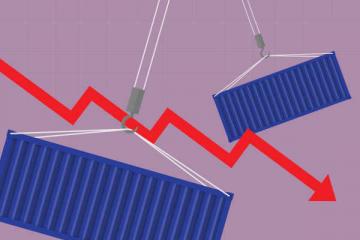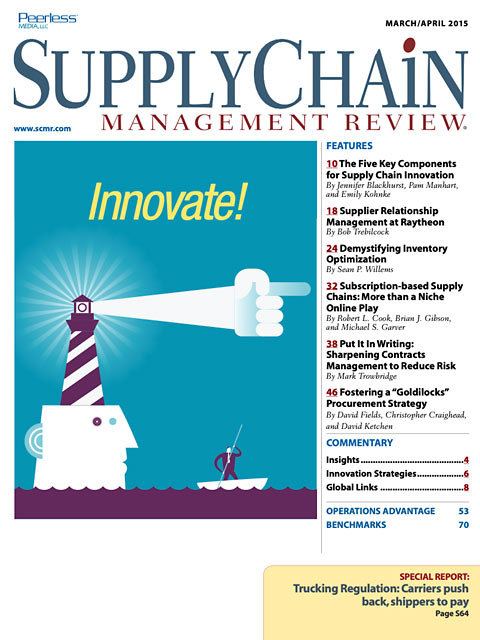Sorry, but your login has failed. Please recheck your login information and resubmit. If your subscription has expired, renew here.
March-April 2015
Anyone who’s ever bought a house knows the realtor’s motto: Location, location,location. It’s the most important factor in determining the value of a property. Based on the press releases that come across my desk these days, supply chain’s motto is: Innovate,innovate, innovate. This issue includes approaches to inventory optimization, contract management with third party logistics providers and contract manufacturers, and the Goldilocks approach to supply management—an innovative concept aimed at keeping your procurement department from running too hot or too cold. Browse this issue archive.Need Help? Contact customer service 847-559-7581 More options
Gone are the days of managing supply chain performance without having strong written agreements in place. Handshakes and good intentions and long-term trusted relationships may have sufficed in earlier times, but in today’s frenetic, volatile, global business environment, they leave businesses exposed to significant risks.
The challenges are exacerbated by elevated levels of outsourcing. True, outsourcing as a business practice is not new, but the extent to which it has evolved, and the range of business practices now involved, are what create cause for concern. It is not uncommon for companies to contract with third parties for some or all of their supply chain services, ranging from inventory management and packaging to transportation and logistics management. That’s particularly true when supporting an international customer base.
Indeed, numerous studies have identified outsourcing as a hallmark of successful companies. PwC’s Global Supply Chain Survey 2013, incorporating responses from 500 supply chain leaders in North America, Europe, and Asia, reported on the top-performing companies as follows: “The leaders typically outsource about 60 percent of their warehousing and logistics activities and nearly 50 percent of their manufacturing and assembly activities.”
 |
This complete article is available to subscribers
only. Click on Log In Now at the top of this article for full access. Or, Start your PLUS+ subscription for instant access. |
SC
MR
Sorry, but your login has failed. Please recheck your login information and resubmit. If your subscription has expired, renew here.
March-April 2015
Anyone who’s ever bought a house knows the realtor’s motto: Location, location,location. It’s the most important factor in determining the value of a property. Based on the press releases that come across my… Browse this issue archive. Access your online digital edition. Download a PDF file of the March-April 2015 issue.
 |
Download Article PDF |
Gone are the days of managing supply chain performance without having strong written agreements in place. Handshakes and good intentions and long-term trusted relationships may have sufficed in earlier times, but in today’s frenetic, volatile, global business environment, they leave businesses exposed to significant risks.
The challenges are exacerbated by elevated levels of outsourcing. True, outsourcing as a business practice is not new, but the extent to which it has evolved, and the range of business practices now involved, are what create cause for concern. It is not uncommon for companies to contract with third parties for some or all of their supply chain services, ranging from inventory management and packaging to transportation and logistics management. That’s particularly true when supporting an international customer base.
Indeed, numerous studies have identified outsourcing as a hallmark of successful companies. PwC’s Global Supply Chain Survey 2013, incorporating responses from 500 supply chain leaders in North America, Europe, and Asia, reported on the top-
performing companies as follows: “The leaders typically outsource about 60 percent of their warehousing and logistics activities and nearly 50 percent of their manufacturing and assembly activities.”
 |
SUBSCRIBERS: Click here to download PDF of the full article. |
SC
MR


Latest Supply Chain News
Latest Resources

 Explore
Explore
Topics
Latest Supply Chain News
- Inflation continues to have a wide-ranging impact on supply chains
- A reshoring history lesson
- Strategic cost savings differ from cutting costs
- Planning fatigue may be settling in
- Inflation, economic worries among top supply chain concerns for SMBs
- April Services PMI declines following 15 months of growth, reports ISM
- More latest news
Latest Resources
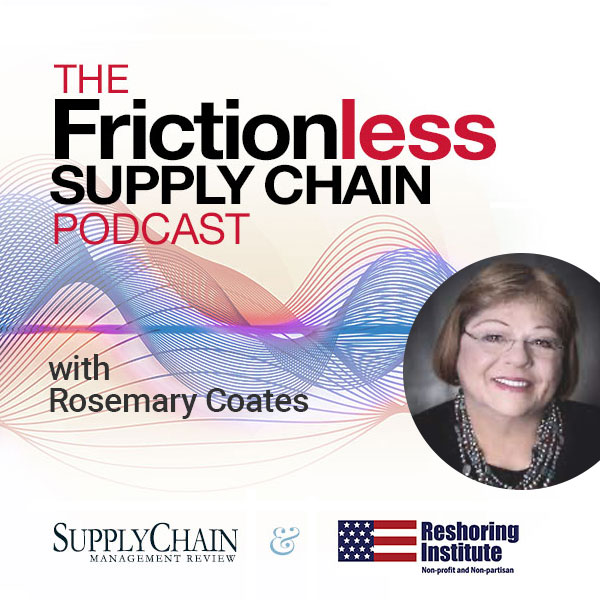
Subscribe
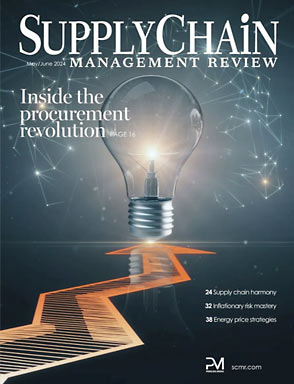
Supply Chain Management Review delivers the best industry content.
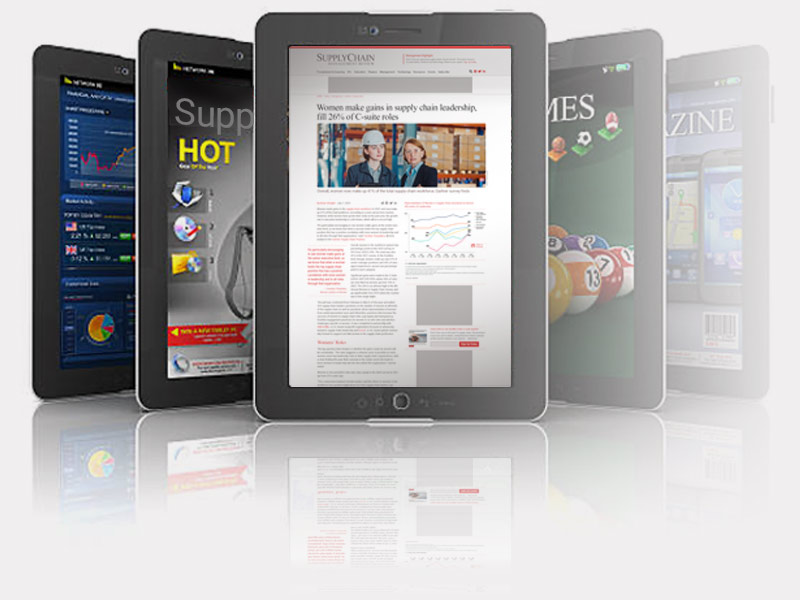
Editors’ Picks


